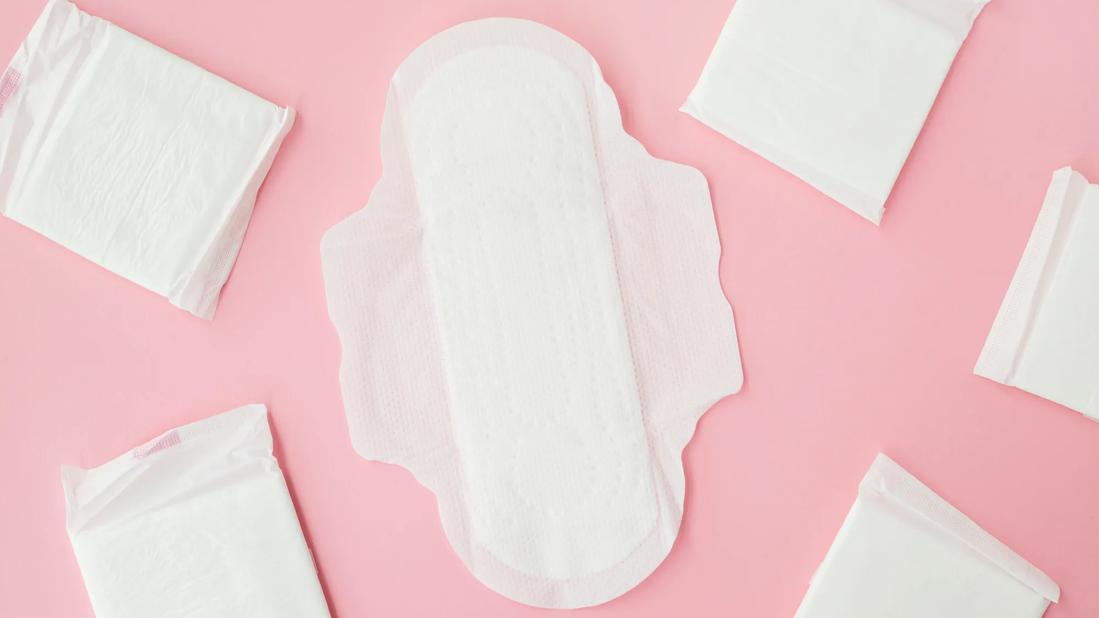Pads are a low-effort option for period management and come in different absorbencies, materials and shapes

Sanitary, or menstrual, pads are the OG of period products. The no-muss, no-fuss option. And in a landscape of newer innovations, like period underwear, menstrual cups and the free-bleeding movement, they can be easy to overlook.
Advertisement
Cleveland Clinic is a non-profit academic medical center. Advertising on our site helps support our mission. We do not endorse non-Cleveland Clinic products or services. Policy
But there’s a reason menstrual pads have staying power. They get the job done.
Ob/Gyn Alison Stalzer, DO, discusses pros and cons and tips for choosing and using pads.
Call them what you will — menstrual pads, period pads, sanitary napkins or Kotex® — pads are absorbent products that catch blood during your period. They’re also commonly used after giving birth or having gynecological surgery that causes bleeding from your vagina.
Unlike tampons or menstrual cups, which you insert into your vagina, pads stick to the inside of your underwear.
“Probably one of the biggest reasons some women choose pads is that they’re a more hands-off approach,” Dr. Stalzer notes. “You don’t have to be intimately in touch with your body to use them.”
Choosing your period products is all about what works best for your body, your flow and your needs. There’s no right or wrong answer. Pads might be a great fit, or not.
Let’s look at some pros and cons.
Pros
Advertisement
Cons
Choosing the right pads to buy isn’t always an easy task.
“There are all kinds of options out there — different materials, absorbencies, sizes and shapes,” Dr. Stalzer says.
That variety is a good thing. Or a confusing thing, depending on how you look at it.
Let’s break down the options:
To use a pad, unwrap it and press the sticky side onto the inside of your underwear. Toss the wrapper in the trash — never flush pads or packaging.
Change your pad when it feels damp on your skin, or at least every four to six hours during the day.
“Changing your pad every four hours is a good habit,” Dr. Stalzer recommends. “That usually lines up with how often we go to the bathroom, and it keeps things clean and comfortable.”
If you find that you need to change your pad more often than that, you can try one with a heavier absorbency. But if you’re soaking through regular absorbency pads in an hour or less, Dr. Stalzer recommends talking with a healthcare provider. It could be a sign of a health condition, like a hormonal imbalance, uterine growths, infection or other concerns.
Pads are easy to use, especially if you’re just getting started or don’t want to get up close and personal with your body. But whether you stick with pads, try something new or mix and match, the right option is whatever helps you to confidently manage your period.
Advertisement
Learn more about our editorial process.
Advertisement

These substitutes for tampons and pads can be a great option for lower cost, lower carbon footprint and longer wear times

Stress, PCOS, perimenopause or hyperthyroidism may cause a low flow

Heat therapy, light exercise and anti-inflammatory medications can bring relief

Fluctuating hormones, water retention and a change in habits can cause temporary weight gain

Stress can cause light, late or nonexistent periods — which may eventually create a hormonal imbalance

Your period typically gets darker as the days go on, starting out pink and changing to red, dark red and even brown

Foods with iron, antioxidants and fiber can help you feel your best

If you wash regularly and change your underwear as needed, this can be a safe (and liberating) alternative to pads and tampons

Babies can get congested easily, but you can calm their cough by keeping them hydrated, using nasal drops and running a humidifier

Weight loss may cause loose, sagging skin and muscle loss to your rear

Several conditions, like vitiligo and fungal infection, can cause a loss of pigmentation, leading to white spots or patches on your skin